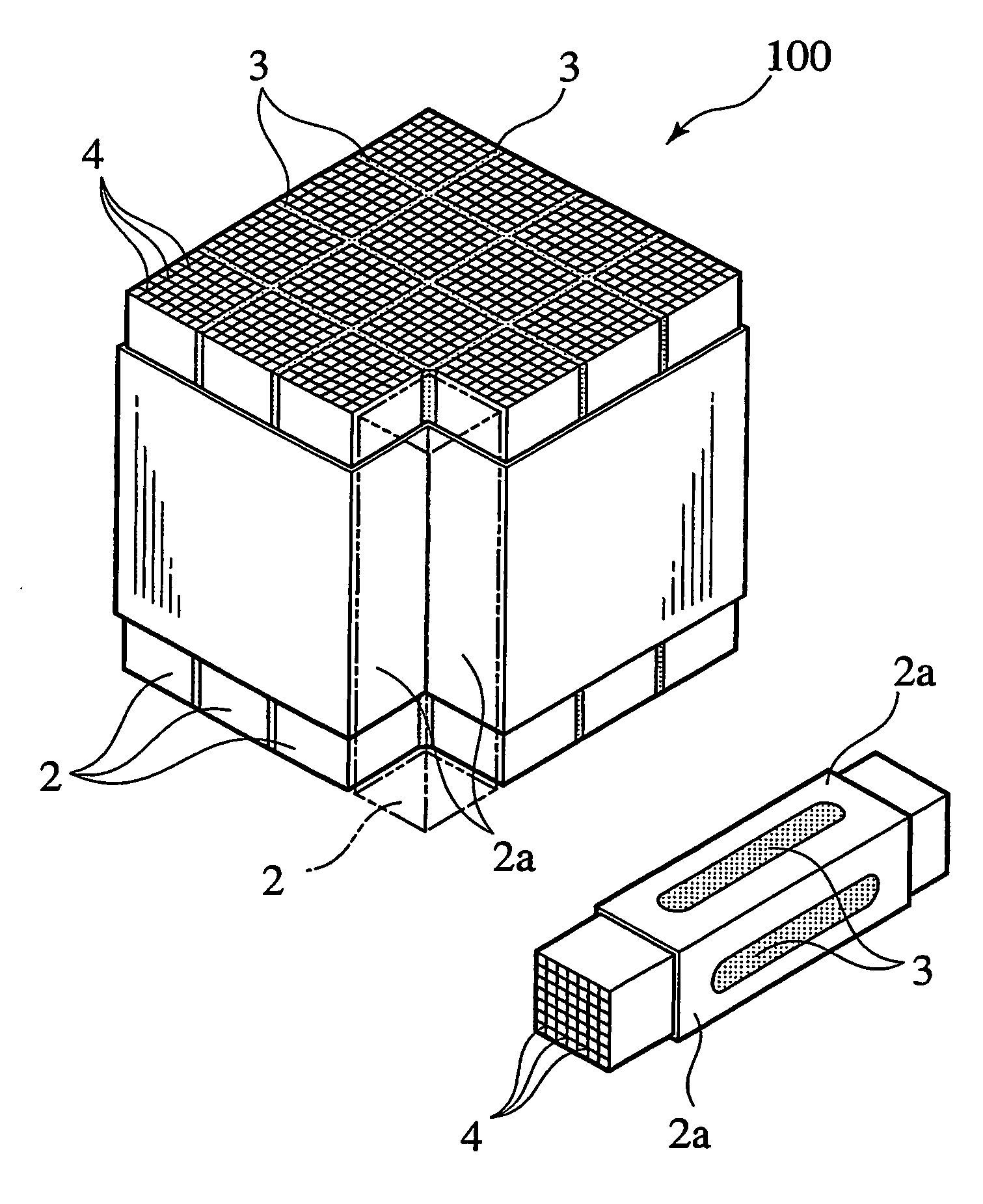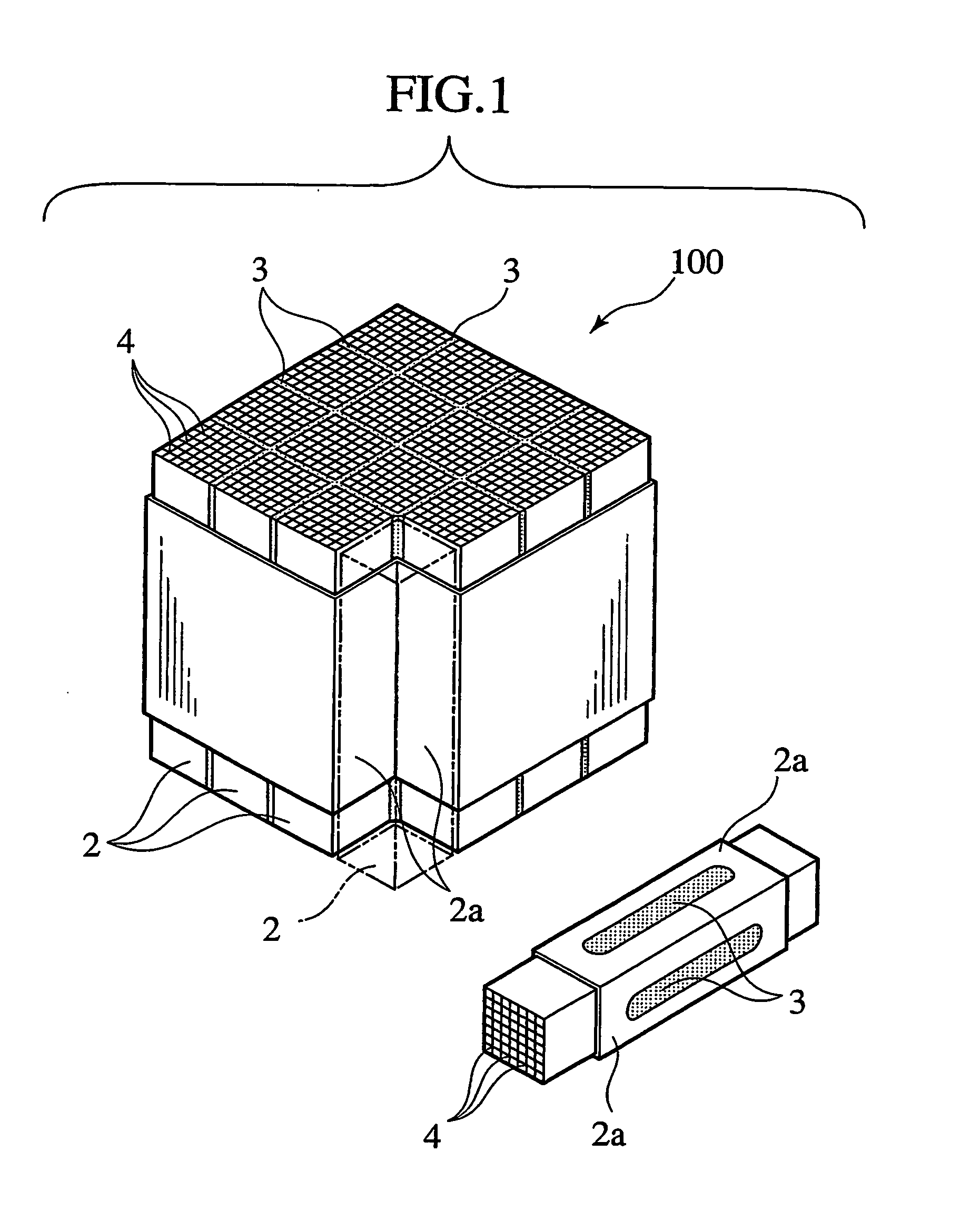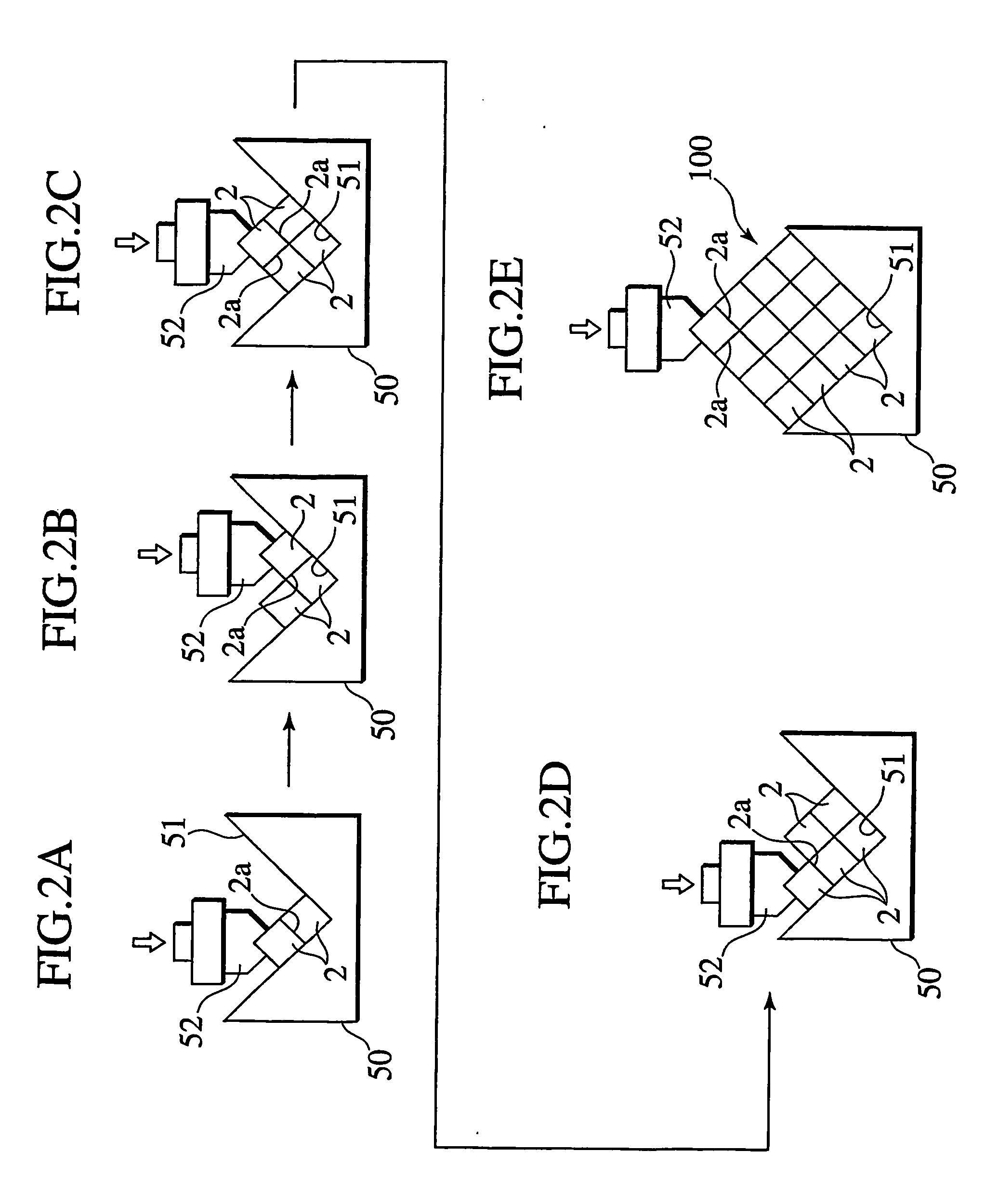Bonding Method of Ceramic Honeycomb Structure
- Summary
- Abstract
- Description
- Claims
- Application Information
AI Technical Summary
Benefits of technology
Problems solved by technology
Method used
Image
Examples
example 1
[0044]FIGS. 6A and 6B show a specimen honeycomb segment 2 (FIG. 6A), and a ceramic honeycomb structure 1 (FIG. 6B) which is formed by bonding 16 pieces of the specimen honeycomb segments 2 together while interposing the adhesive layers 3.
[0045] The specimen honeycomb segment 2 is formed into a quadratic prism having dimensions of a=35 mm, b=35 mm, and c=152 mm.
[0046] The adhesive constituting the adhesive layers 3 applied a composition of 39% by mass of SiC, 30% by mass of aluminosilicate, 20% by mass of colloidal silica, 1% by mass of an inorganic plasticizer, and 10% by mass of water, which had viscosity of 350 p.
[0047] As for the bonding method, the one applying the bonding method shown in FIGS. 3A and 3B was defined as Example 1, and one applying a bonding method configured to stack the honeycomb segments 2 one-by-one and to give pressure and vibration at the time of stacking was defined as Comparative Example 1.
[0048] Bonding Conditions:
[0049] In Example 1, the main pressu...
examples 1 , 2
EXAMPLES 1, 2, and 3
[0054] Example 1 applies the bonding method shown in FIGS. 3A and 3B. Example 2 applies the bonding method shown in FIGS. 5A and 5B in which the preliminary pressurization force was set to 0.25 kgf / cm2. Example 3 applies the bonding method shown in FIGS. 5A and 5B in which the preliminary pressurization force 2 was set to 0.5 kgf / cm . Comparative Example 2 applies the bonding method shown in FIGS. 5A and 5B in which the preliminary pressurization force was set to 1 kgf / cm2. Comparative Example 3 applies the bonding method shown in FIGS. 5A and 5B in which the preliminary pressurization force was set to 1.5 kgf / cm2. Comparative Example 4 applies the bonding method shown in FIGS. 5A and 5B in which the preliminary pressurization force was set to 2 kgf / cm2. Comparative Example 5 applies the bonding method shown in FIGS. 5A and 5B in which the preliminary pressurization force was set to 2.5 kgf / cm2.
[0055] At this time, the main pressurization in Examples 1, 2, and 3...
PUM
| Property | Measurement | Unit |
|---|---|---|
| Pressure | aaaaa | aaaaa |
| Force | aaaaa | aaaaa |
| Pressure | aaaaa | aaaaa |
Abstract
Description
Claims
Application Information
 Login to View More
Login to View More - R&D
- Intellectual Property
- Life Sciences
- Materials
- Tech Scout
- Unparalleled Data Quality
- Higher Quality Content
- 60% Fewer Hallucinations
Browse by: Latest US Patents, China's latest patents, Technical Efficacy Thesaurus, Application Domain, Technology Topic, Popular Technical Reports.
© 2025 PatSnap. All rights reserved.Legal|Privacy policy|Modern Slavery Act Transparency Statement|Sitemap|About US| Contact US: help@patsnap.com



